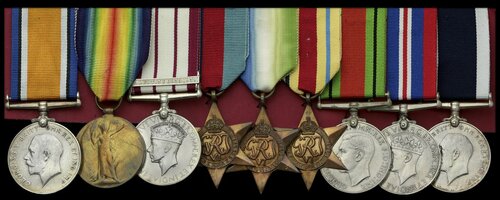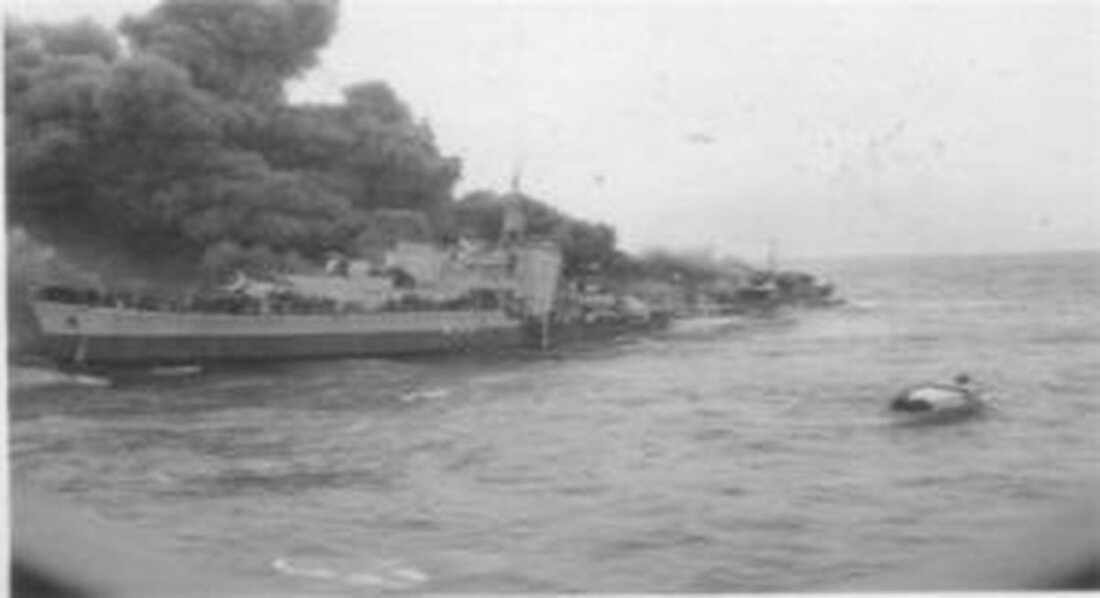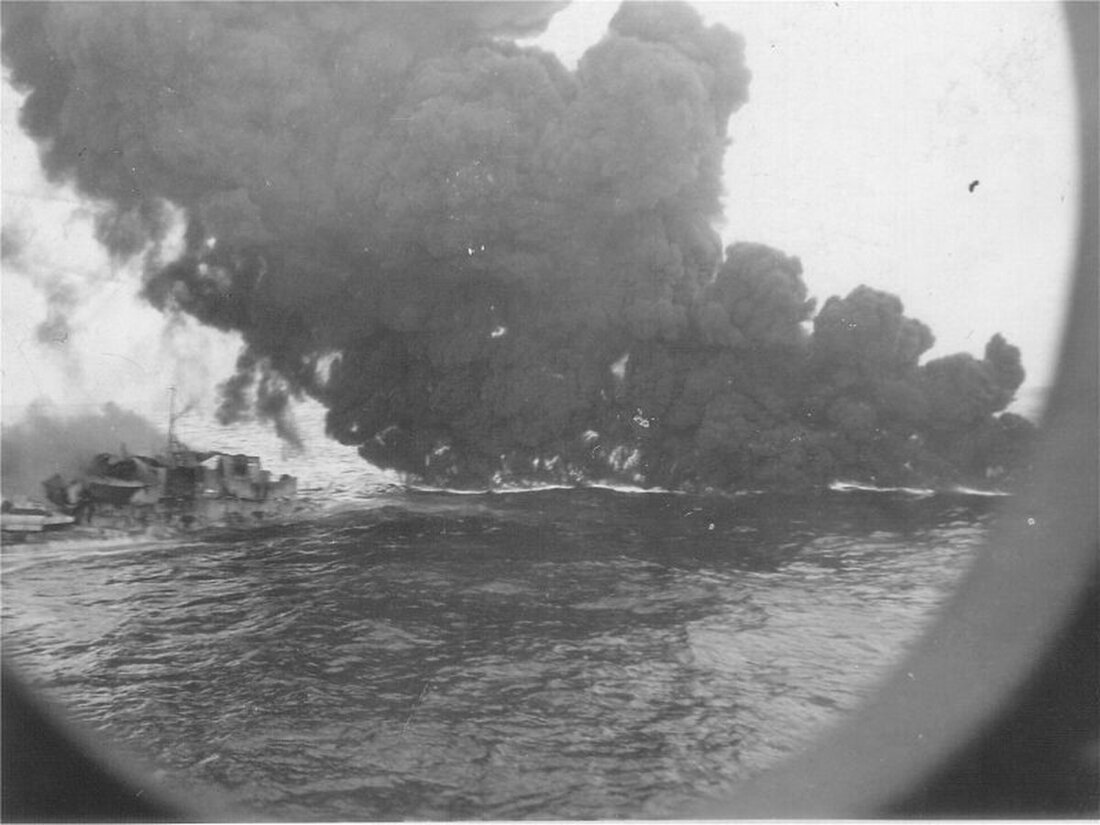Auction: 21002 - Orders, Decorations and Medals
Lot: 105
An impressive World War and Palestine operations group of nine awarded to Able Seaman E. J. Turner, Royal Fleet Reserve, late Royal Navy, a long-served seadog who survived the much-photographed demise of H.M.S. Gurkha in January 1942
British War and Victory Medals (J. 48471 E. J. Turner, Ord., R.N.); Naval General Service 1915-62, 1 clasp, Palestine 1936-39 (J. 48471 E. J. Turner, A.B., R.N.); 1939-45 Star; Atlantic Star; Africa Star; Defence and War Medals 1939-45; Royal Navy L.S. and G.C., G.VI.R., 1st issue (J. 48471 E. J. Turner, A.B., H.M.S. Vivid), generally very fine (9)
Edwin John Turner was born at Devonport, Devon on 20 June 1900 and entered the Royal Navy as a Boy 2nd Class in January 1916.
His subsequent wartime appointments included the cruiser H.M.S. Royalist (September 1916-June 1917) and the armed merchant cruiser Teutonic (November 1917-April 1918).
Awarded his L.S. & G.C. Medal in June 1933, Turner witnessed active service off Palestine in the destroyer Griffin in 1936 and was serving at the shore establishment Drake on the renewal of hostilities in September 1939.
The gallant Gurkha
In February 1941, he joined the destroyer Gurkha and he remained similarly employed up until her loss in January 1942.
Laid down in 1938, Gurkha was to have been named Larne, but on the loss of her namesake in 1940, the Gurkha Brigade offered to pay for a new ship. In gratitude, the Prime Minister, Winston Churchill, ordered that the destroyer to be launched should be named Gurkha; the launching ceremony was performed by his daughter Mary, and the ship was completed on 18 February 1941.
At the end of July 1941, after working up at Scapa, Gurkha formed part of an anti-submarine escort to a Middle East troop convoy to Suez. On 29 August she was ordered to join the escort of convoy OC-71 which had suffered severe losses and, on her arrival at Gibraltar, she came under the orders of the Flag Officer Force H.
Early in the morning of the 30 September 1941, while acting as anti-submarine screen to Force H, she destroyed the Italian submarine Adua east of Cartanga. Later in the year she escorted the Nelson home after she had been torpedoed in a Malta convoy whilst giving passage to the Ark Royal survivors. A very sudden storm caused Gurkha serious damage and she made for Plymouth for repairs.
Back in Gibraltar by mid-December 1941, Gurkha returned to escort duties. On 16 January 1942, she left Alexandra escorting convoy MW-8B and during the night she took the astern position. At first light, while proceeding at 25 knots to take up a new station, she was hit by a torpedo from the U-133 and her aft magazine blew up.
Amidst dramatic scenes - she was ablaze from bow to stern - the stricken Gurkha was towed clear of burning surface oil by the Dutch destroyer Isaac Sweers, thus saving the greater part of her crew. The survivors were transferred to the Dutch destroyer by boats and later landed at Tobruk; Turner was among them.
Turner was released 'Class A' in September 1945.
Subject to 20% VAT on Buyer’s Premium. For more information please view Terms and Conditions for Buyers.
Sold for
£280
Starting price
£130









